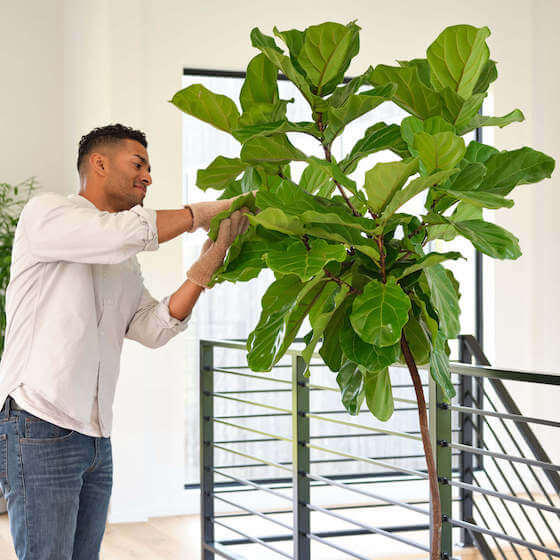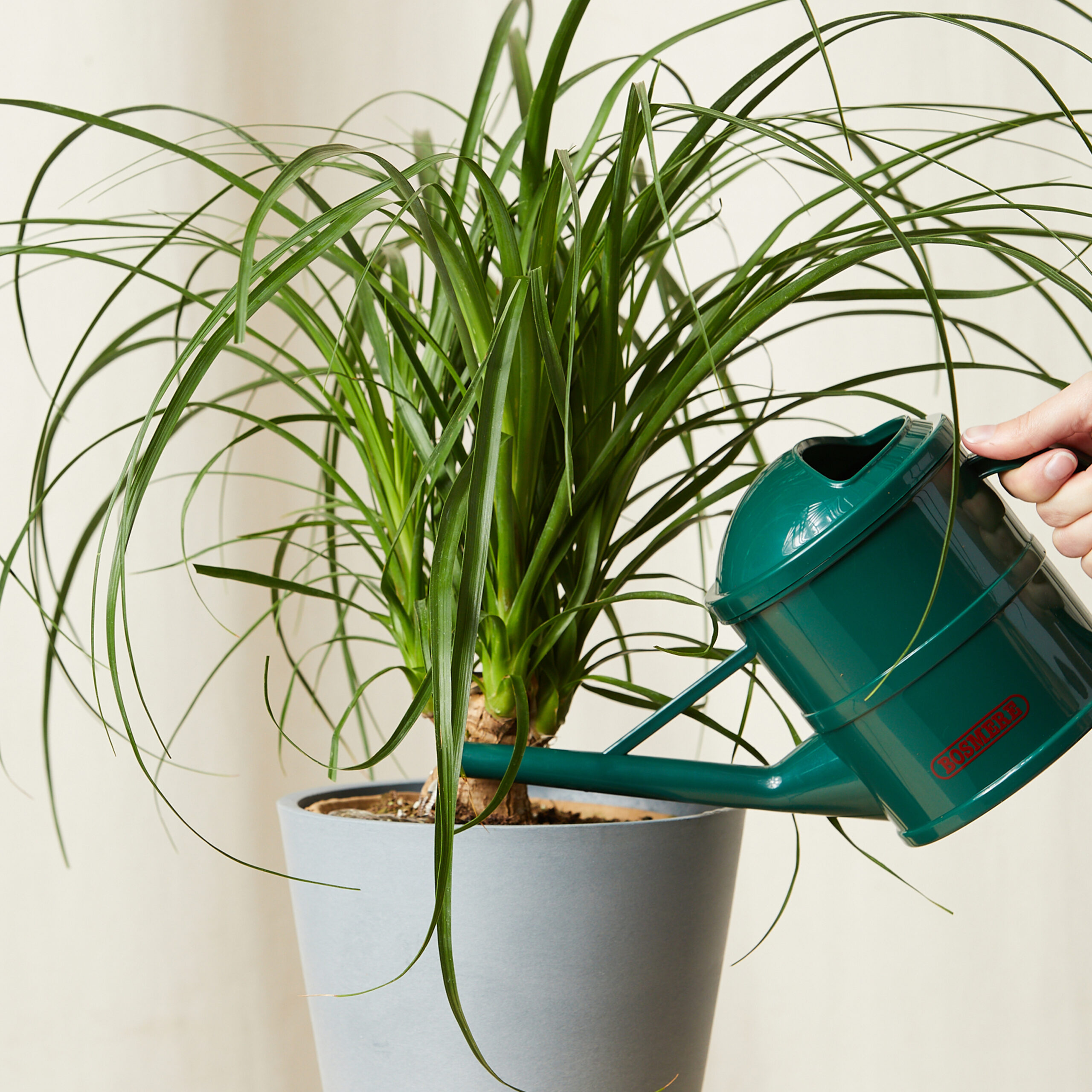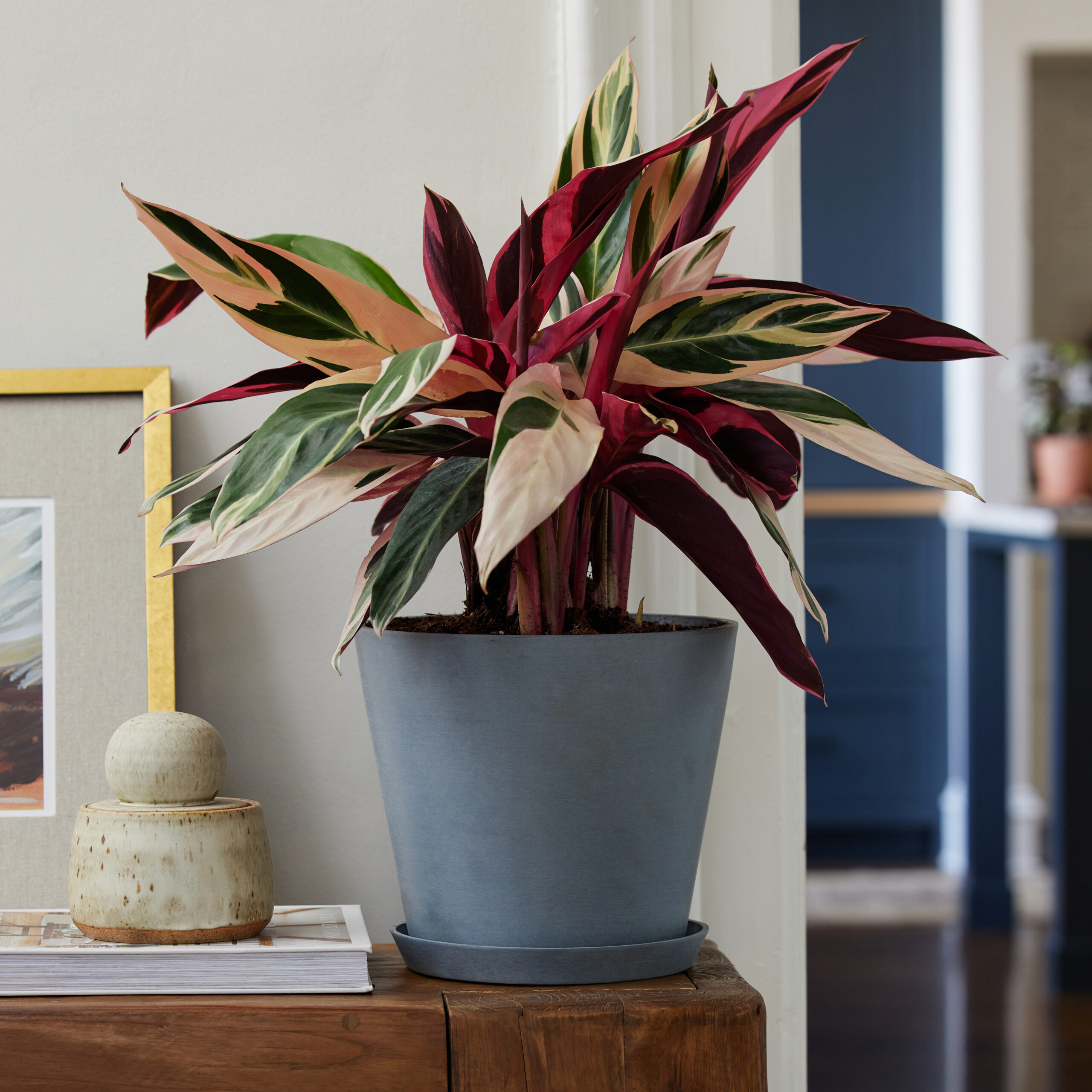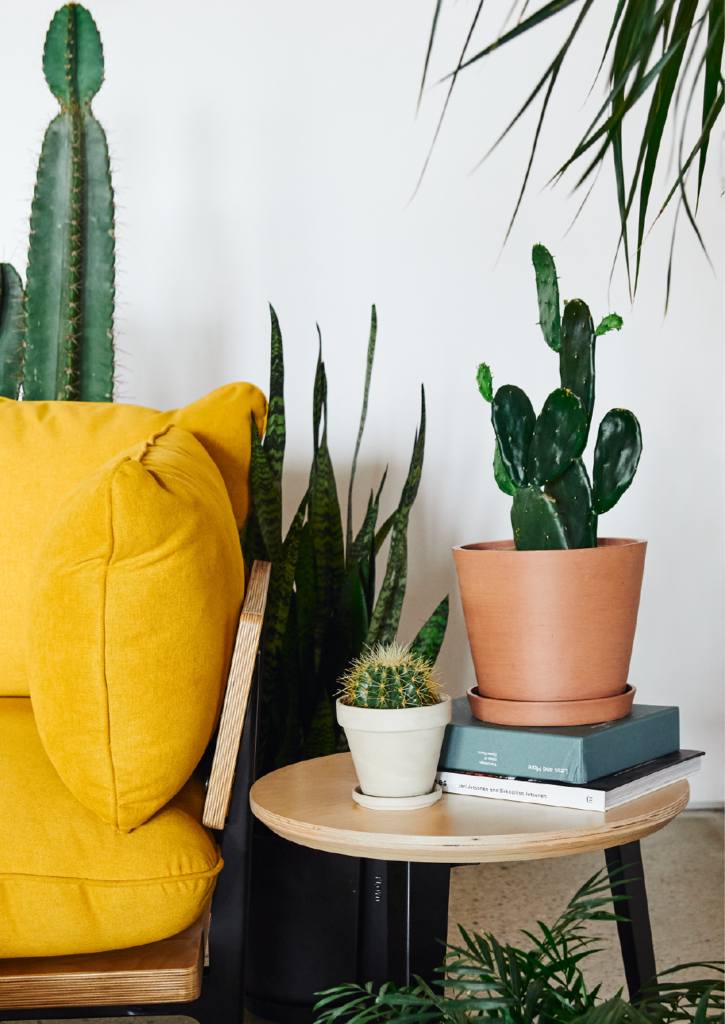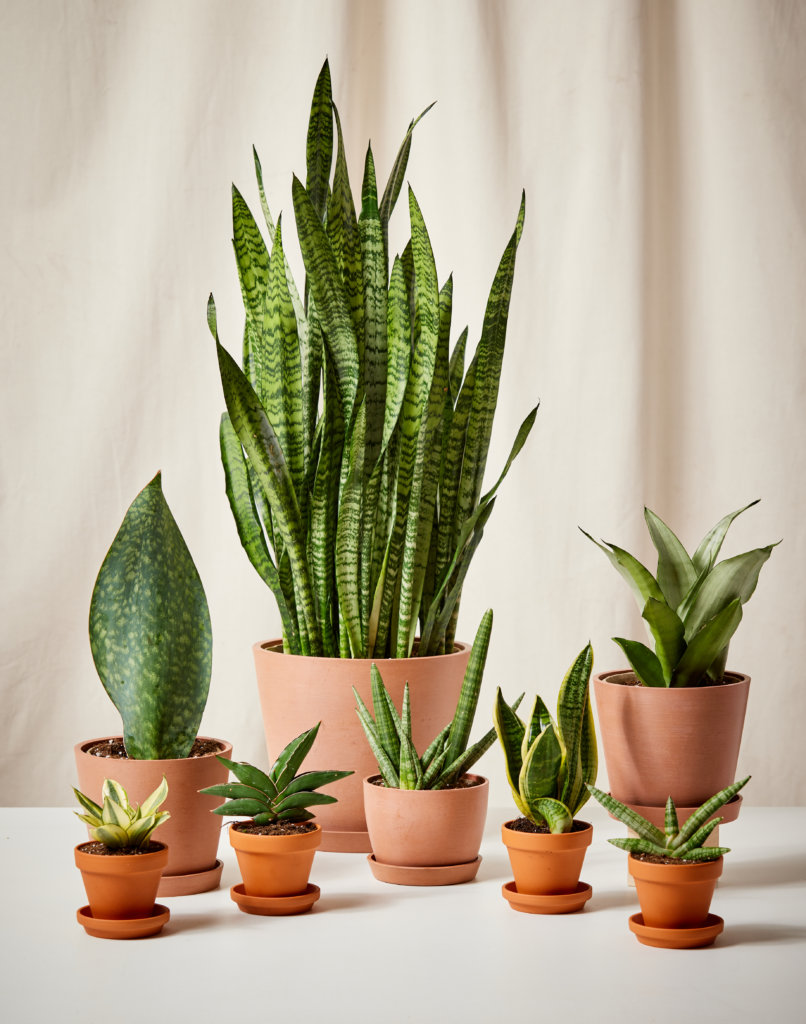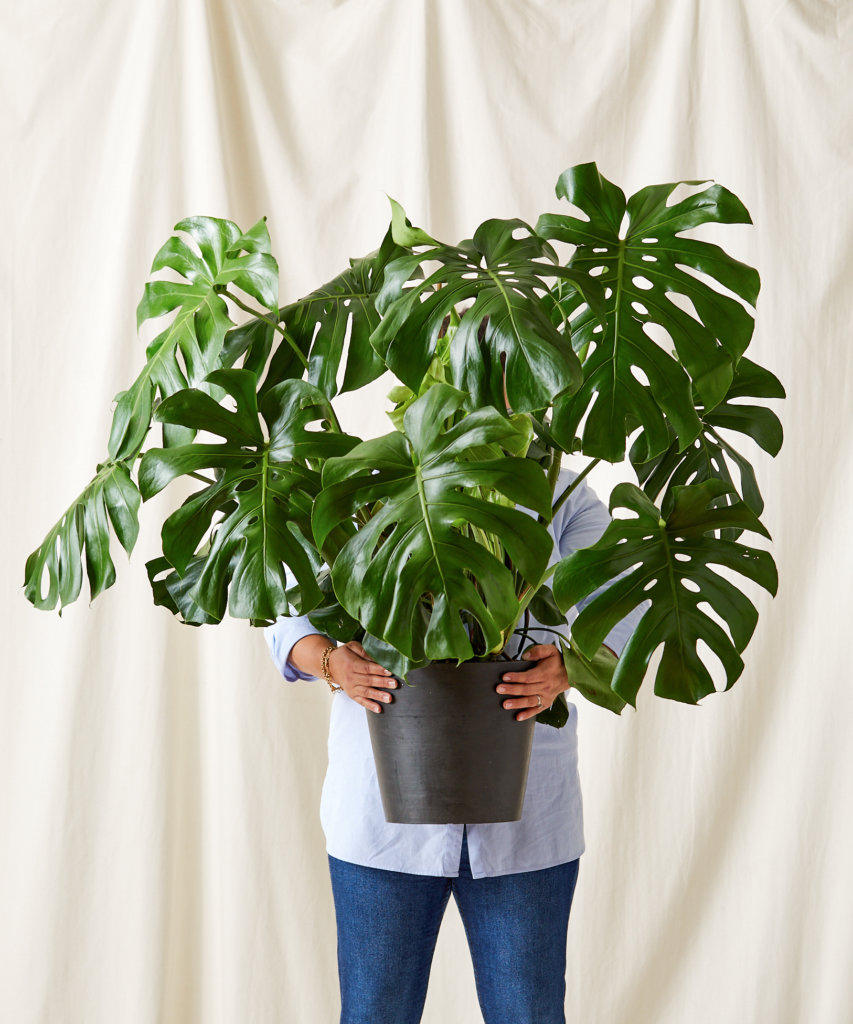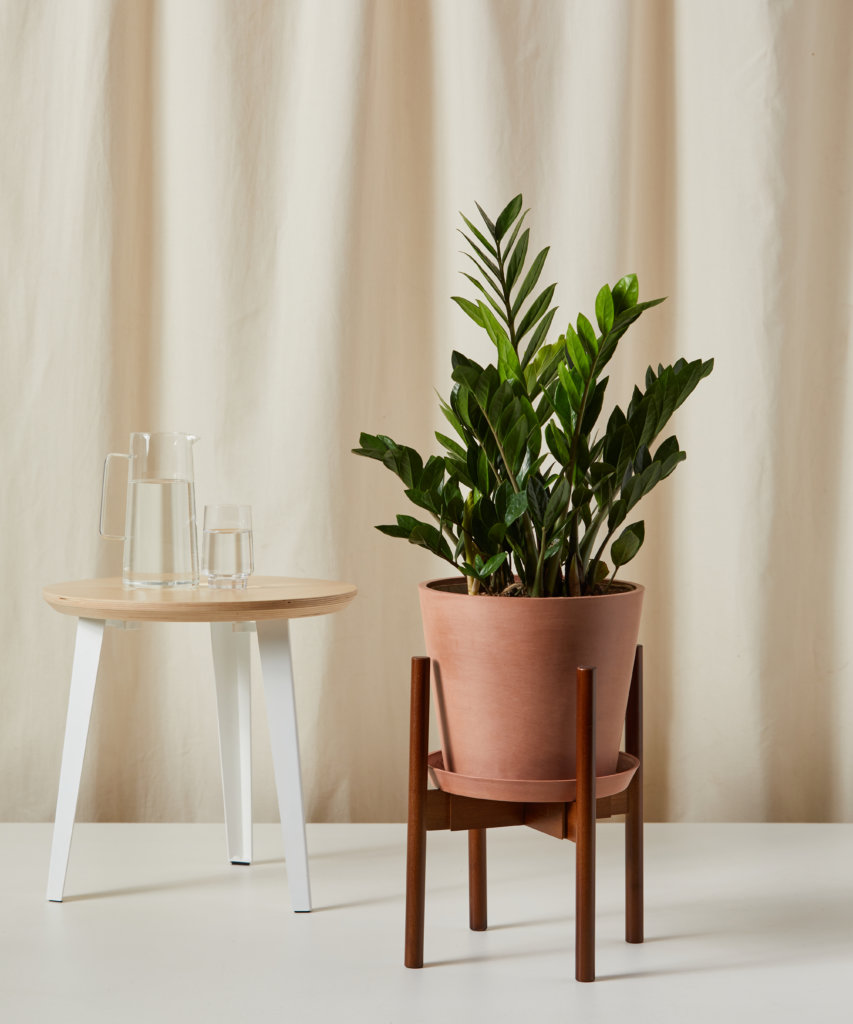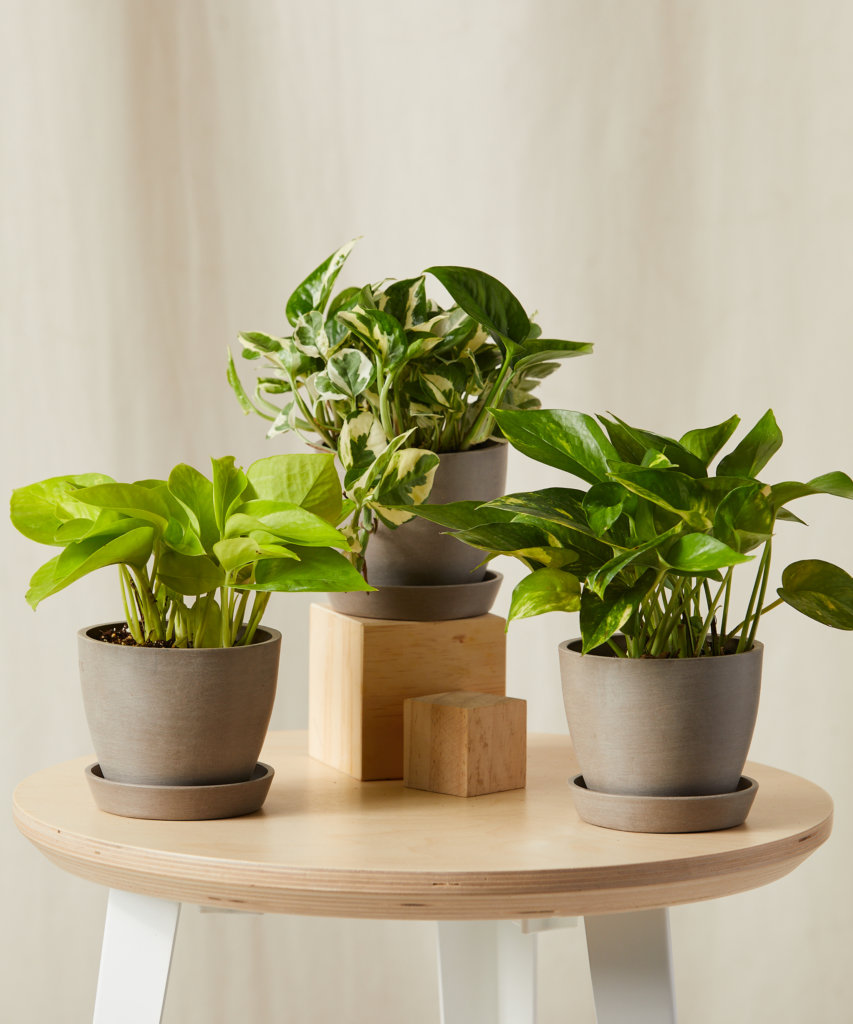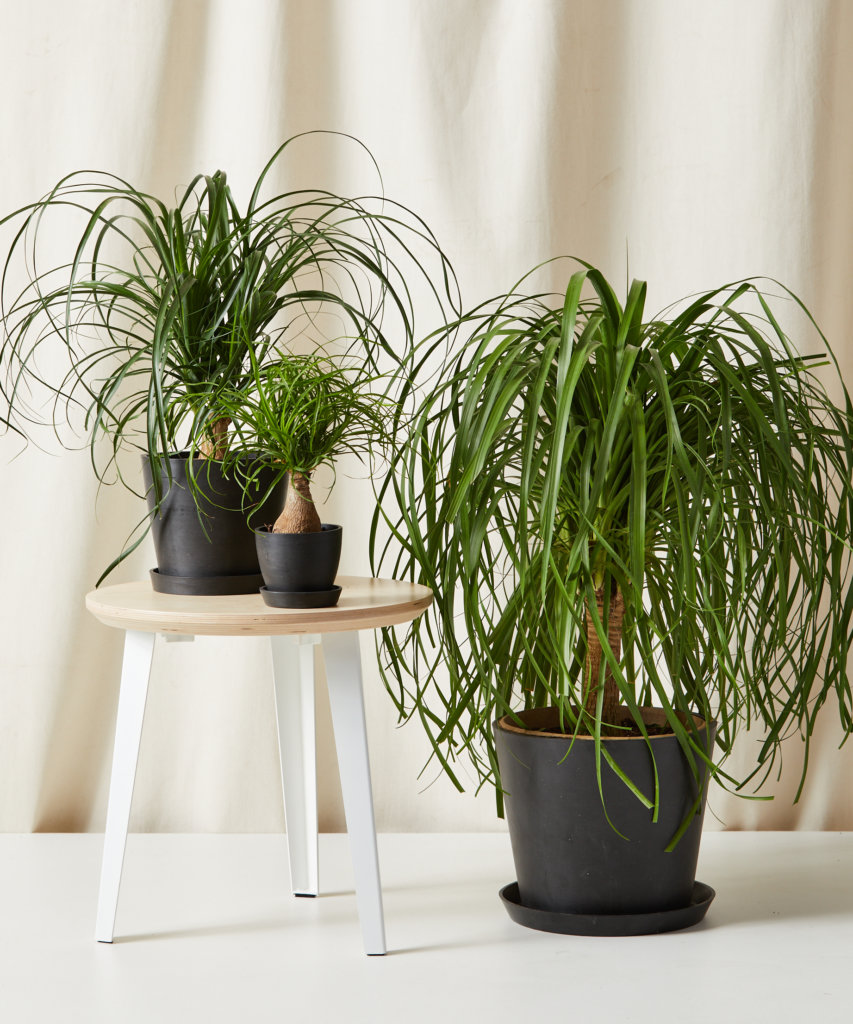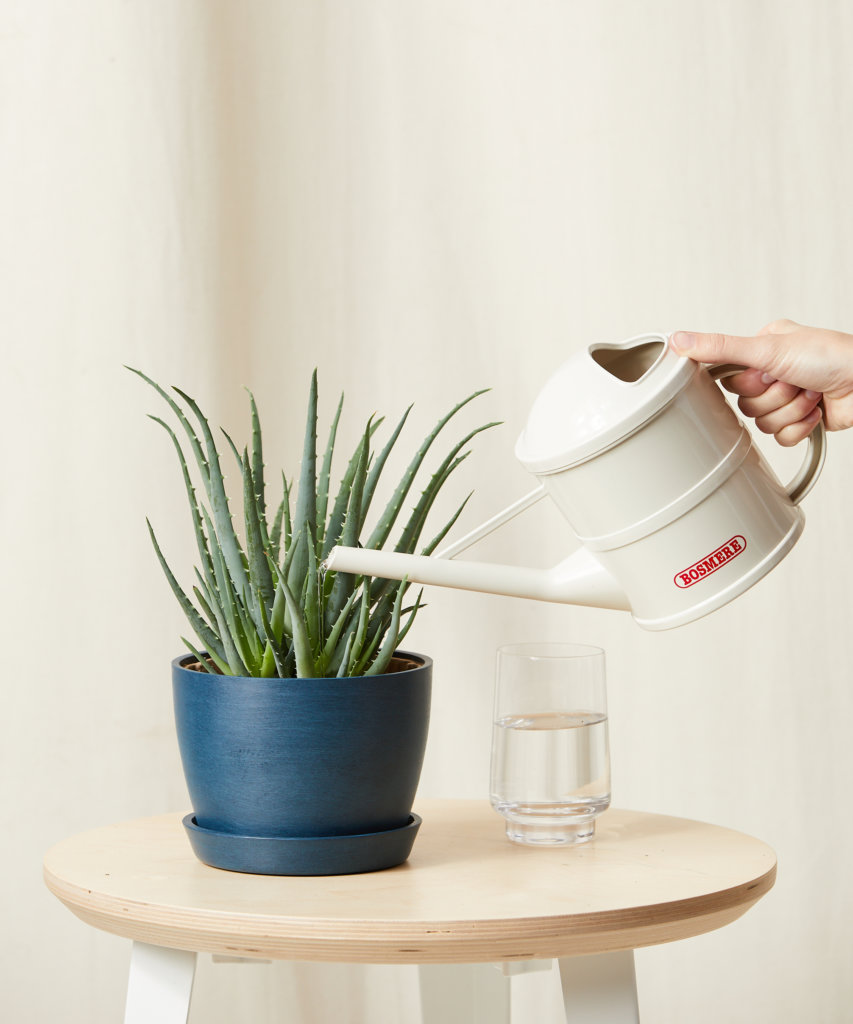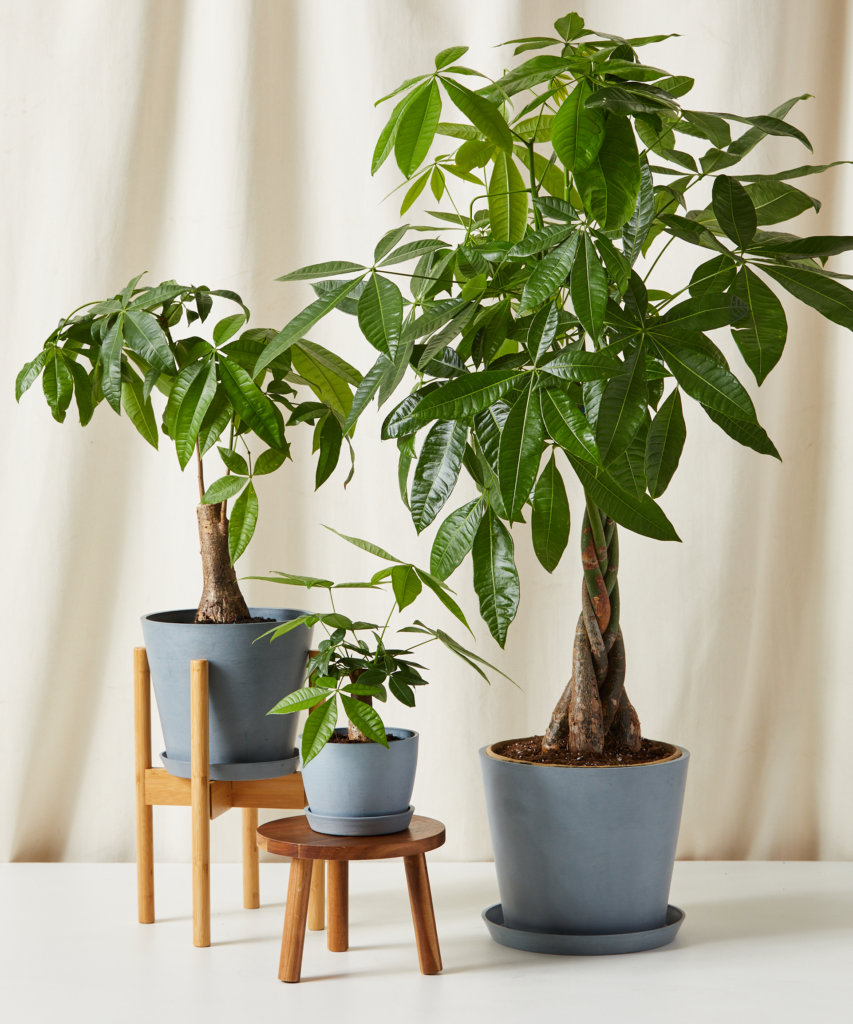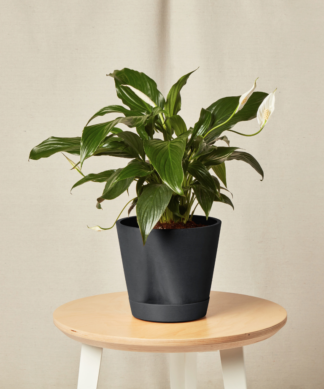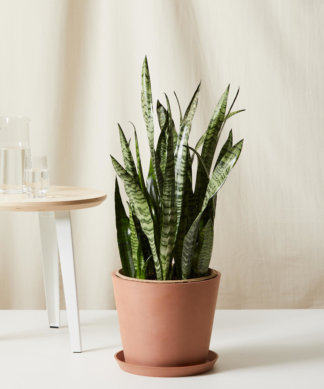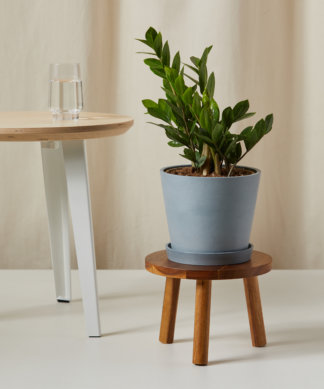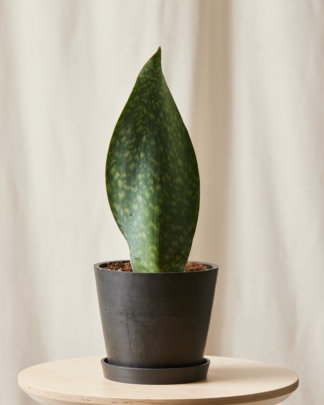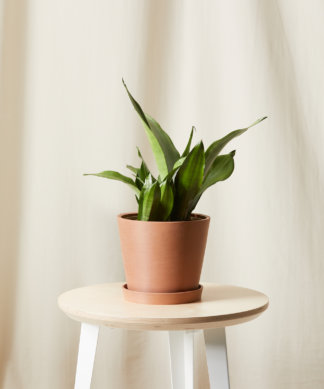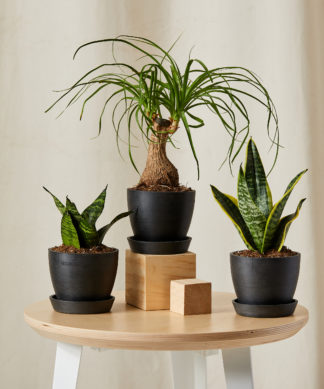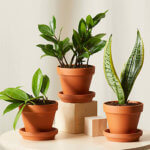Plant Care
9 of the Easiest Houseplants That Anyone Can Grow

Are you interested in getting started with indoor plants but aren’t sure where to begin? There are so many easy-care houseplants available that anyone can grow successfully. Read on to learn about 9 easy plants to grow in any space.
1. Cactus
About Cacti
Cacti are among the easiest houseplants to keep alive. A perfect mix of factors makes them a great choice for a first indoor plant purchase. There are countless cacti that are appropriate for anyone from novice to expert.
First, cacti are succulent plants, meaning they have parts that are thickened and fleshy, which store water. Most cacti are far more succulent than any other kind of plant. If you get a cactus, it will be able to store excess water for longer. Even the most common plant care task, watering, can be far less frequent. Their drought tolerance means you don’t have to stick to a strict watering schedule.
Cacti developed to be able to survive harsh desert environments. Many indoor environments are dryer, especially when air conditioning or heating is turned on. Cacti are accustomed to even the driest and hottest air that the natural environment can produce.
Evolving for desert life made cacti good at thriving in poor soils. Your soil doesn’t need frequent fertilization, and even gritty pot soil will suffice.
The harsh and dehydrated desert environment also taught cacti to defend themselves from predators. Few pests or diseases harm cacti. They have natural armor that deflects and even harms most prey. Their aridity also makes them less prone to fungal diseases, as long as you don’t overwater them.
Lastly, Cacti grow slowly, requiring little maintenance while leaving you with time to adapt. Once they’re potted, they can be largely left alone for years.
However, the one thing that your cacti will truly appreciate is sunlight. They are best placed wherever they can get maximal sun exposure. The most common downfall of indoor-grown cacti is a combination of insufficient light and soil that stays too wet.
Cactus 101: How to Care for Cacti
2. Sansevieria
About Sansevieria
Sansevierias are a genus of flowering plants. They are strong plants that don’t need any straightening out. They are some of the easiest houseplants to care for, with their sword-like leaves being naturally resilient and growing upward.
Sansevieria plants are also adapted to droughts and have a natural resistance to them. Their beautiful leaves and their rhizomes are better at storing water than most other plants.
The main factor making Sansevieria easy to care for is their adaptability and resilience. They aren’t picky about temperature! Most indoor conditions are fine for them, as they also aren’t picky about humidity. Instead, they simply demand some sunlight, though indirect sunlight is actually preferred.
By fitting into any space without taking up much room due to their narrow, upright growth habit and demanding very little from you, Sansevieria plants are among the easiest to care for.
Sansevieria 101: How to Care for Snake Plants
3. Monstera
About Monstera
Monstera, AKA “Swiss Cheese” plants, are iconic for their combination of beauty and ease of care. If you haven’t seen one in person, you’ve probably seen them on Instagram feeds or in movie sets.
The plant is known for its large leaves dotted with holes like Swiss cheese that grow large and in all directions. The bold and exotic look doesn’t take that much time or effort to produce.
Monstera naturally thrives in the wild in humid, warm environments. In that environment, it climbs up trees with aerial roots, allowing it to become quite a spectacle. You can also get a similarly dramatic effect with a pole or other item. So, you either get a special ground-level addition to your design or a lush jungle appearance.
Fortunately, despite how unique they are, Monsteras are surprisingly beginner friendly. It’s not a problem if you forget to water them occasionally. They aren’t like Cacti, but their soil should ideally be left to dry out for a while before watering. They aren’t meant to get through droughts, but they don’t need to be constantly watched over.
Monstera plants are also forgiving when it comes to temperatures. They adapt well to all typical indoor room temperatures. The only catch is that they don’t do so well in dry environments, but you can always mist their leaves or use a humidifier.
The Monstera has become an iconic houseplant on everyone’s wishlist. Luckily, they’re also extremely easy to care for! Monsteras tend to thrive in most indoor environments and can grow very large and beautiful, becoming a piece of art or a focal point in a home.
Monstera 101: How to Care for Monsteras
4. ZZ Plant
About ZZ Plant
The ZZ Plant, AKA “Eternity Plant,” is another one of the easiest to care for houseplants due to its adaptability. It can tolerate and even thrive in a wide range of indoor conditions.
Coming from East Africa, the ZZ plant is a tropical perennial that has adopted drought resistance. It also easily tolerates low light and doesn’t need much water. In fact, the plant often goes dormant (while staying green) over the winter.
Normally, ZZ plants should only be watered once every 4-6 weeks or once the soil is fully dry. During periods of active growth in the spring and summer, more frequent watering encourages growth, as does bright, indirect light, and warm temperatures. The thick waxy leaves combine with the rhizomes to store water.
The upright and simple outline of the stems and leaves also makes it easy to work with the plant and spot any issues. The ZZ plant can reach 2-3′ tall when fully mature. Its arching upright stems are actually individual leaves that sprout up directly from the soil level.
The ZZ plant can reach 2-3′ tall when fully mature. Its arching upright stems are actually individual leaves that sprout up directly from soil level. If you notice the leaflets are turning yellow, that’s an indication the soil could be staying too wet, so check the soil moisture and refrain from watering until it has completely dried out.
ZZ Plant 101: How to Care for ZZ Plants
5. Pothos
About Pothos
When we’re thinking about beginner houseplants, we have to mention Pothos. Native to Southeast Asia, a Pothos is a beautiful and tough trailing plant that you can place almost anywhere in your home. It’s adaptable and can take a lot of neglect but continue to look beautiful. It can even maintain its shape and color in a low-lit corner for a surprisingly long time.
Tolerances for dim light and low water are the basis of why Pothos is so easy to deal with. It will even grow under those conditions. But it’s also a visually simple yet colorful plant that is easy to navigate.
The trailing stems of pothos are also easily propagated. Just snip off a 4-6″ section, place the cut end in water, and wait for roots to develop! Our propagation starter kit has everything you’ll need.
Pothos Plant 101: How to Care for Pothos Plant
6. Ponytail Palm
About Ponytail Palm
The beautiful and whimsical desert-dwelling Ponytail Palm is known for its low-fuss nature. Its thin, playful leaves atop the unique and sturdy trunk make this plant a real show-stopper.
Ponytail Palm plants are succulents originating in semi-arid deserts in Southern Mexico. They are drought-resistant, storing their extra water in their bulb-like trunks. That means it can wait a while between watering. For a new plant parent, this is a great anatomy! It will gracefully stand out in a larger collection of plants as well.
In its natural habitat, the Ponytail Palm can grow into a small tree. But in a pot, it’s a slow-growing species, rarely outgrowing the home you give it.
Ponytail Palms prefer bright light but aren’t too picky about other factors. It’s known as the neglectful plant parent’s favorite plant for a reason. The Ponytail Palm is forgiving when it’s neglected. All the same, it’s best to keep them watered and put them somewhere with decent (50% to 60%) humidity.
Ponytail Palm 101: How to Care for Ponytail Palm
7. Aloe
About Aloe
A popular plant for its low-maintenance and forgiving personality, Aloes are some of the easiest plants to care for. Originating in the arid regions on the Arabian peninsula, it’s another succulent that doesn’t need much watering and is forgiving to forgetful owners.
Aloe has long been used for medicinal gels treating inflammation, such as sunburn. It’s one of the most popular indoor and outdoor plants, both for the flavor it can add to any environment and its ease of care. The hedgehog aloe offers a distinctive shape and texture.
These succulents love to be moved outdoors in the warmer months, and will thank you with faster growth and colorful flowers.
The only thing Aloes ask for is a sunny spot in your home and infrequent watering. It does best in warm but dry environments.
8. Prayer Plant

About Prayer Plant
Prayer Plants make an excellent choice for beginners. These striking plants offer distinct patterns on their leaves and a unique daily show for their owners. Their leaves fold up at night, then open during the day, resembling hands in prayer. This dazzling display alongside a beginner-friendly care routine makes this plant the perfect option for newer plant parents.
Prayer plants are native to the rainforests of Brazil, so they are tolerant of low light conditions. They do prefer frequent watering and a boost of humidity, but overall they are still pretty hardy. As they grow, they will gracefully trail and can easily be propagated to share their joy with others.
Prayer Plant Care Instructions
- Choose a pot with drainage holes.
- Get a rich and well-draining soil mix, ideally with peat moss, perlite, and coco coir to retain moisture while allowing airflow.
- Plant the Prayer Plant with the crown at soil level.
- Water when the top inch of the soil starts to feel dry (typically once per week).
- Check your humidity and try to increase it if it’s below 40%.
- Avoid sudden changes in temperature.
9. Money Tree
About Money Tree
Bring some luck into your life without much hassle with a Money Tree. Money trees are believed to foster positive energy and bring good luck to their owners, with their low-maintenance being the cherry on top. They show off lush, green leaves atop their sturdy trunk, giving the plant a tropical flair that will radiantly stand out in your space.
Tolerant of low-light situations, Money Trees are a great choice for new or hands-off plant parents thanks to their ability to go long periods between watering. This plant prefers for its soil to dry out at least halfway down before getting another drink. If you want to see faster growth, place this plant in bright indirect light and watch it thrive.
Money Tree Care Instructions
- Get a large pot with drainage holes.
- Use a well-draining soil mix, ideally peat-based soil combined with sand or perlite for added aeration.
- Plant your Money Tree with the root ball level to the soil surface while avoiding covering the trunk.
- Place the tree in bright indirect light, such as a north-facing window.
Water infrequently, a Money Tree prefers soil to dry out at least halfway down before getting another drink. - Pay attention to and clean the leaves as the tree grows.
- OPTIONAL: Occasionally rotate it for even growth; Money Trees tend to grow in the direction of their light source.
Indoor Plants Delivered
Bloomscape specializes in plant delivery directly from the greenhouse to your door, making becoming a plant parent easier than ever. We also offer care guides and customized care advice, helping set you up for success. Check out our newest arrivals, including plants, plant care tools, and supplies.
